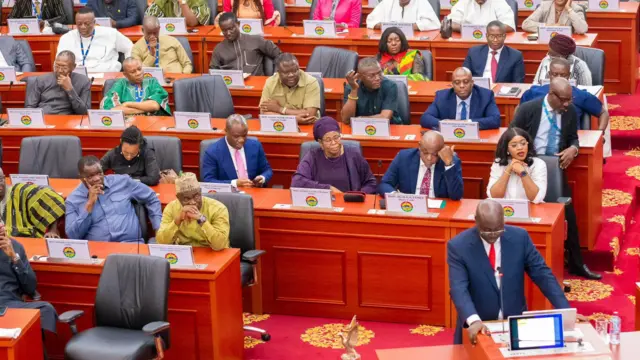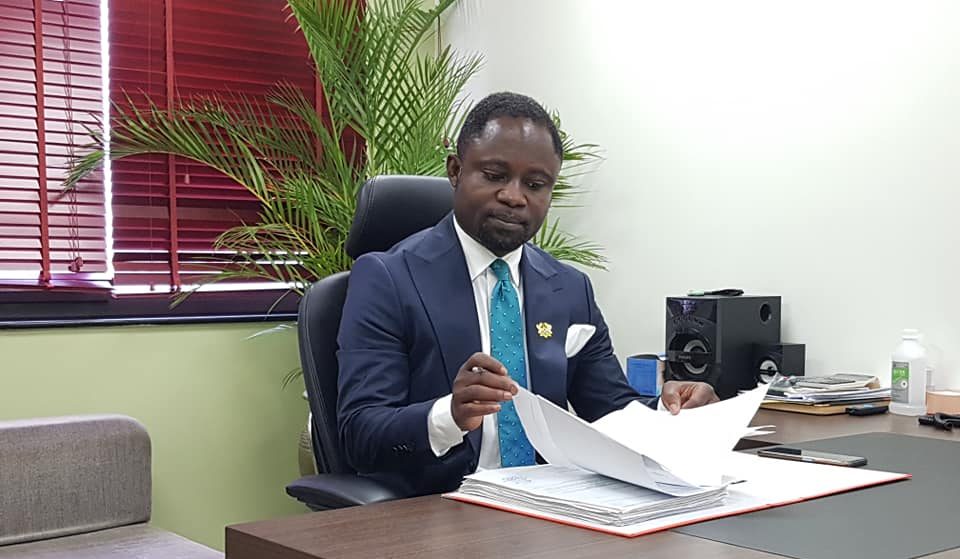
The 2026 Budget and Economic Policy Statement presented by the government of Ghana marks a turning point in the nation’s health sector. With President John Mahama at the helm, the administration has laid out ambitious plans that seek not only to expand infrastructure but also to strengthen the very foundations of healthcare delivery.
The Minister of Health, Kwabena Mintah Akandoh, captured the spirit of this vision when he declared that health is the “heartbeat of national development.” This statement reflects the government’s conviction that without a robust health system, the country cannot achieve inclusive growth or sustainable progress.
At the center of this budget is a significant financial commitment. The government has allocated 22.8 billion cedis to the Ministry of Health, representing approximately 7.5% of total expenditure. This is a notable increase from the 17.8 billion cedis allocated in 2025, signaling a renewed prioritization of healthcare.
Such a leap in funding demonstrates a recognition of the challenges that have plagued the sector for years, including stalled projects, inadequate facilities, and inequities in access to care. The 2026 budget seeks to address these issues head-on by combining new initiatives with the completion of long-delayed projects.
One of the most striking features of the plan is the construction of six new regional hospitals in the newly created regions. According to the budget statement, “Government will initiate processes to construct new regional hospitals in the six newly created regions. Three of these facilities will break ground in 2026, alongside two district hospitals in Shama and Bole.”
This initiative is not merely about adding buildings to the healthcare landscape; it is about reducing regional disparities and ensuring that citizens in underserved areas have access to quality care. For decades, the uneven distribution of health facilities has contributed to inequities in outcomes, with rural populations often left behind. The new hospitals represent a step toward correcting this imbalance.
Equally important is the government’s commitment to completing ten hospitals under the Agenda 111 program. After years of slow progress, the 2026 budget finally provides a clear path forward. The statement notes that “after years of slow progress, the government commits to completing ten hospitals under Agenda 111, signaling continuity and an emphasis on completing existing projects.”
This is a crucial development, as Agenda 111 was initially conceived as a transformative program to expand healthcare infrastructure nationwide. Its delays had become symbolic of the challenges of project management and political transitions. By recommitting to its completion, the government is sending a message of accountability and continuity.

The budget also addresses the issue of abandoned projects, which have long been a source of frustration for communities and health professionals alike. Facilities such as La General Hospital, Effia Nkwanta Regional Hospital, Komfo Anokye Maternity Block, and the Ashanti Regional Hospital at Sewua are set to see renewed work.
The government described these projects as “symbols of restored trust in public healthcare delivery.” This statement is particularly poignant, as abandoned projects often erode public confidence in governance. Reviving them not only improves healthcare capacity but also rebuilds trust between citizens and the state.
Beyond infrastructure, the 2026 budget places emphasis on maternal and child health. Seven hospitals will receive targeted upgrades to improve maternal and neonatal services, including modernized equipment and expanded specialist care.
This focus is critical, given Ghana’s ongoing struggle with maternal and neonatal mortality rates. By investing in specialized care and equipment, the government aims to save lives and improve outcomes for mothers and children, who represent some of the most vulnerable groups in society.
Another innovative aspect of the budget is the introduction of the Ghana Medical Trust Fund, popularly referred to as MahamaCares. This initiative is designed to provide sustainable financing for the treatment of non-communicable diseases (NCDs) and specialized medical services. The budget explains that MahamaCares will introduce “a comprehensive NCD financing policy covering eligible conditions, approved services, tariffs, and essential medicines.”
Diagnostic and treatment centers will be built on a public–private partnership basis in all major hospitals. The expected outcome is a system where patients can access uninterrupted care without excessive out-of-pocket expenses. This is a bold attempt to tackle the growing burden of NCDs, which include conditions such as diabetes, hypertension, and cancer.
The financial commitment to MahamaCares is substantial. For 2026, the government allocated 2.3 billion cedis of the National Health Fund to the program, representing about 20% of the over 11.4 billion cedis allocated to the Fund. Since the initiative was only launched in April 2025, this marks its first budgetary allocation.
The government believes that MahamaCares will provide “improved financial protection for households, especially through MahamaCares, which targets the most financially burdensome diseases.” This approach reflects a shift in health financing from mass construction projects toward targeted, quality-focused investments that address long-term disease burdens.
The anticipated outcomes of these initiatives are far-reaching. The creation of new regional hospitals is expected to reduce disparities in access to care, while the completion of Agenda 111 projects will increase healthcare capacity and improve district-level services. The revival of abandoned projects will strengthen tertiary and specialized care, and the upgrades to maternal and child health facilities will lower mortality rates. Together, these measures are designed to elevate quality, equity, and efficiency in healthcare delivery.

However, the budget also acknowledges key risks to implementation. Funding sustainability remains a concern, with risks of delayed releases, competing national priorities, and high dependence on public financing. Politicization of health infrastructure is another challenge, as project abandonment during political transitions has historically undermined progress.
Weak accountability and oversight, shortages of specialists, uneven workforce distribution, and high equipment costs further complicate the picture. Exchange rate pressures, due to reliance on imported equipment, add another layer of vulnerability. These risks highlight the importance of strong governance and effective management if the ambitious plans are to succeed.
Timelines for implementation vary. The new regional hospitals are expected to begin construction in 2026, with completion projected by 2029. The ten Agenda 111 hospitals are slated for completion within 2026, while timelines for abandoned projects and hospital upgrades remain vague. This lack of specificity raises questions about the feasibility of the plans, but the overall direction is clear: the government is determined to move forward.
The broader implications of the 2026 health budget extend beyond healthcare. By improving geographic equity, reducing catastrophic health expenditure, and supporting vulnerable groups, the budget strengthens social protection. It also contributes to poverty reduction, inclusive development, and long-term sustainability. Job creation in both health and ancillary services is another expected benefit, further linking healthcare investment to economic growth.
In conclusion, the 2026 health sector budget represents a major opportunity to transform healthcare delivery in Ghana. Through expanded infrastructure, renewed commitment to long-stalled projects, and the innovative MahamaCares initiative, the government is prioritizing equitable access, financial protection, and improved service quality.
As the budget itself notes, “If implemented effectively, the 2026 budget will strengthen Ghana’s health system and support national goals of poverty reduction, inclusive development, and long-term sustainability.” The challenge now lies in ensuring consistent financing, strong accountability, and operational capacity. If these hurdles can be overcome, Ghana may well be on the path to achieving Universal Health Coverage, fulfilling the vision of health as the heartbeat of national development.


